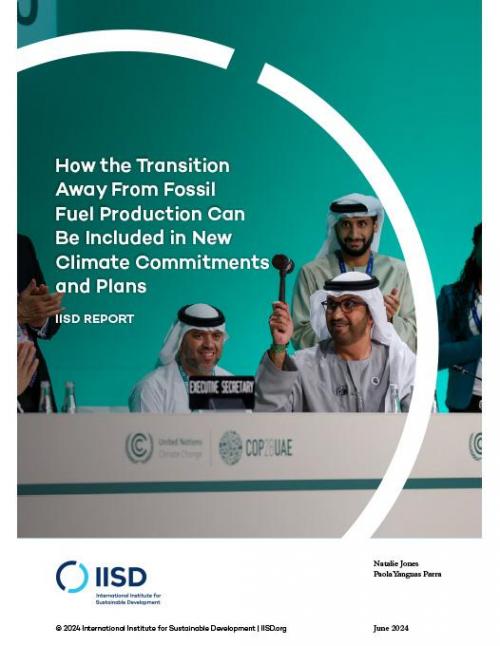June 13, 2024 — As interim climate talks draw to a close in Bonn, Germany, attention is turning to national action. Governments are due to submit the next generation of national climate plans, or NDCs, in 2025. These will be the first since the international agreement at COP 28 to transition away from fossil fuels.
Experts from the International Institute for Sustainable Development (IISD) have analyzed the last round of NDCs from the top 20 biggest fossil fuel-producing countries (FF20): Algeria, Australia, Brazil, Canada, China, Germany, India, Indonesia, Iran, Iraq, Kuwait, Norway, Poland, Qatar, Russia, Saudi Arabia, South Africa, Turkey, United Arab Emirates, and the United States. Together, these account for 93% of global coal production, 80% of oil, and 77% of gas.
They found a third (seven) of the FF20 make no mention of fossil fuel production in their NDCs. Six stated an intention to continue or increase production. Only one, the EU, representing coal producers Germany and Poland, mentioned a pathway to decrease production.

Natalie Jones, policy advisor at IISD, says, “The science is clear: there is no room for new fossil fuel infrastructure in any credible pathway to Paris goals, and fossil fuel production and consumption must be rapidly phased out. The time is now for fossil fuel-producing countries to align their climate plans with what the world urgently needs.”
The report identifies five elements governments can include in NDCs and long-term strategies to reflect the outcome of the global stocktake at COP 28:
- Information on national fossil fuel production, future production plans, reserves, and support.
- Targets and pathways to wind down fossil fuel production. This could be in the form of a commitment to reduce or phase out fossil fuel production by a target date.
- Policies and measures to disincentivize or constrain fossil fuel production, for example, moratoriums on development, production and export caps, reform of production subsidies, and increased taxes on extraction.
- Policies and measures to support workers and communities in the transition and diversify the economy away from fossil fuel production.
- Information related to equity and international support and cooperation.
Paola Yanguas Parra, policy advisor at IISD, says, "In a world that has agreed to transition away from fossil fuels, producers that keep mining and drilling are vulnerable to market shocks. NDCs and long-term strategies can be used to guide an orderly transition and attract investment into alternative growth sectors.”










